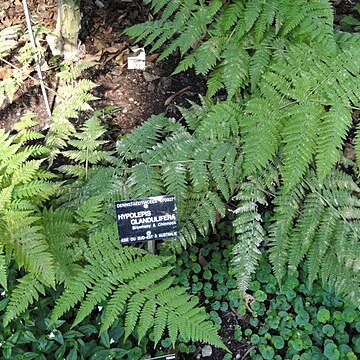Plants terrestrial. Rhizome long creeping, solenostelic, covered with multicellular bristles. Fronds medium-sized to large, monomorphic; stipes not articulate to rhizome; lamina 1-4-pinnate, herbaceous or papery, both surfaces often with many gray multicellular hairs; pinnules or terminal lobes oblique, base asymmetrical, lower part cuneate and upper part truncate; veins free, pinnate; rachis grooved, hairy. Sori almost marginal, orbicular, protected by a reflexed tooth or marginal flap, or naked, terminal on veins; annulus of 12-18 thickened cells; paraphyses linear, often absent; spores bilateral, elliptic, spinulose or tuberculate, rarely smooth.
Terrestrial ferns. Rhizome long-creeping, hairy. Fronds often large, at least 2-pinnate, usually more divided. Veins free. Scales absent; hairs present on fronds and rhizomes, sometimes modified into spines (not in Australia). Sori round or elliptic, varying from marginal and terminal on the veins to submarginal and not quite terminating the veins, lacking paraphyses; protected by reflexed laminal flaps which vary from membranous and sharply reflexed to green and partially reflexed, occasionally lacking; true inner indusium always absent. Spores monolete, usually echinate and ±reticulate, occasionally almost smooth.
Sori globose, us. submarginal, protected by reflexed modified seg. of lamina or further from margin and quite unprotected. Sporangia stalked; annulus incomplete, vertical; spores oblong, mostly tuberculate to spinulose. Rhizome creeping, solenostelic, bearing hairs; lamina bipinnate to decompound; veins free. Some 45 terrestrial spp., mainly tropical to subtropical.
No inner indusium

